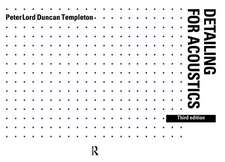Plasticity and Creep of Metals
Autor Andrew Rusinko, Konstantin Rusinkoen Limba Engleză Paperback – 8 noi 2014
| Toate formatele și edițiile | Preț | Express |
|---|---|---|
| Paperback (1) | 951.47 lei 6-8 săpt. | |
| Springer Berlin, Heidelberg – 8 noi 2014 | 951.47 lei 6-8 săpt. | |
| Hardback (1) | 957.62 lei 6-8 săpt. | |
| Springer Berlin, Heidelberg – 24 iul 2011 | 957.62 lei 6-8 săpt. |
Preț: 951.47 lei
Preț vechi: 1160.32 lei
-18% Nou
Puncte Express: 1427
Preț estimativ în valută:
182.12€ • 197.89$ • 153.08£
182.12€ • 197.89$ • 153.08£
Carte tipărită la comandă
Livrare economică 22 aprilie-06 mai
Preluare comenzi: 021 569.72.76
Specificații
ISBN-13: 9783642427640
ISBN-10: 3642427642
Pagini: 444
Ilustrații: VIII, 434 p.
Dimensiuni: 155 x 235 x 23 mm
Greutate: 0.62 kg
Ediția:2011
Editura: Springer Berlin, Heidelberg
Colecția Springer
Locul publicării:Berlin, Heidelberg, Germany
ISBN-10: 3642427642
Pagini: 444
Ilustrații: VIII, 434 p.
Dimensiuni: 155 x 235 x 23 mm
Greutate: 0.62 kg
Ediția:2011
Editura: Springer Berlin, Heidelberg
Colecția Springer
Locul publicării:Berlin, Heidelberg, Germany
Public țintă
ResearchCuprins
Classical Theories of Plasticity.- The Concept of Slip.- Synthetic Theory of Plasticity.- The Creep Theory.- New Problems of the Theory of Plasticity and Creep.- Conclusions.
Textul de pe ultima copertă
This book serves both as a textbook and a scientific work. As a textbook, the work gives a clear, thorough and systematic presentation of the fundamental postulates, theorems and principles and their applications of the classical mathematical theories of plasticity and creep. In addition to the mathematical theories, the physical theory of plasticity, the book presents the Budiansky concept of slip and its modification by M. Leonov. Special attention is given to the analysis of the advantages and shortcomings of the classical theories. In its main part, the book presents the synthetic theory of irreversible deformations, which is based on the mathematical Sanders flow plasticity theory and the physical theory, the Budiansky concept of slip. The main peculiarity of the synthetic theory is that the formulae for both plastic and creep deformation, as well their interrelations, can be derived from the single constitutive equation. Furthermore, the synthetic theory, as physical one, can take into account the real processes that take place in solids at irreversible deformation. This widens considerably the potential of the synthetic theory. In the framework of the synthetic theory such problems as creep delay, the Hazen-Kelly effect, the deformation at the break of the load trajectory, the influence of the rate of loading on the stress-strain diagram, creep at the changes of load, creep at unloading and reversed creep, have been analytically described. In the last chapter, the book shows the solution of some contemporary problems of plasticity and creep: Creep deformation at cyclic abrupt changes of temperature, The influence of irradiation on the plastic and creep deformation, Peculiarities of deformation at the phase transformation of some metals.
Caracteristici
Serves both as a textbook and a scientific work Presents the synthetic theory of irreversible deformations Shows the solution of some contemporary problems






















